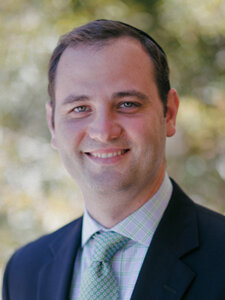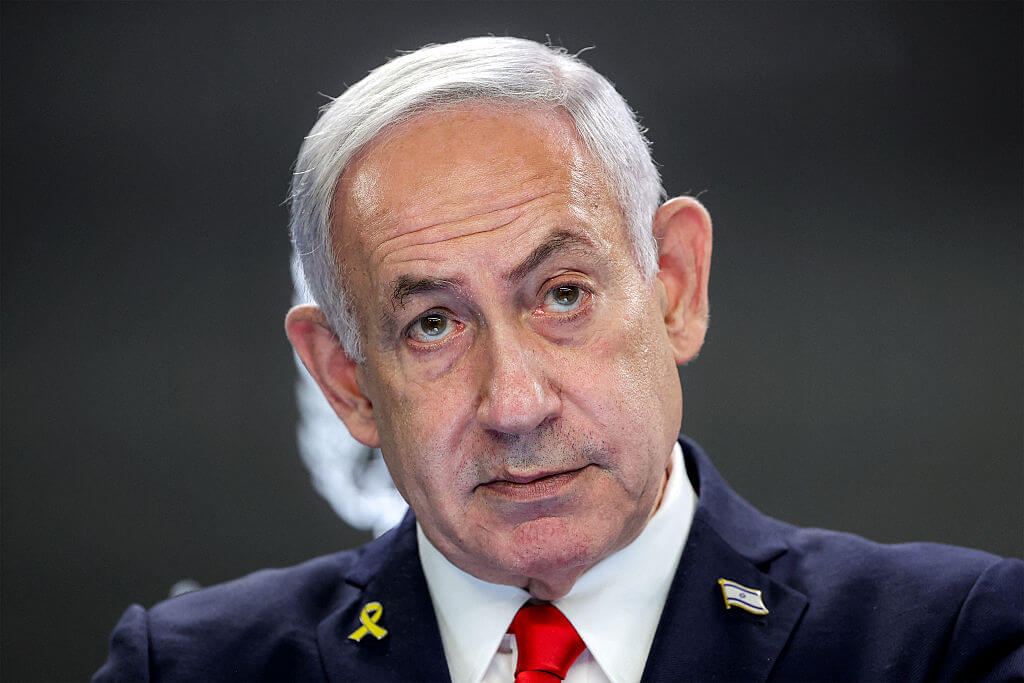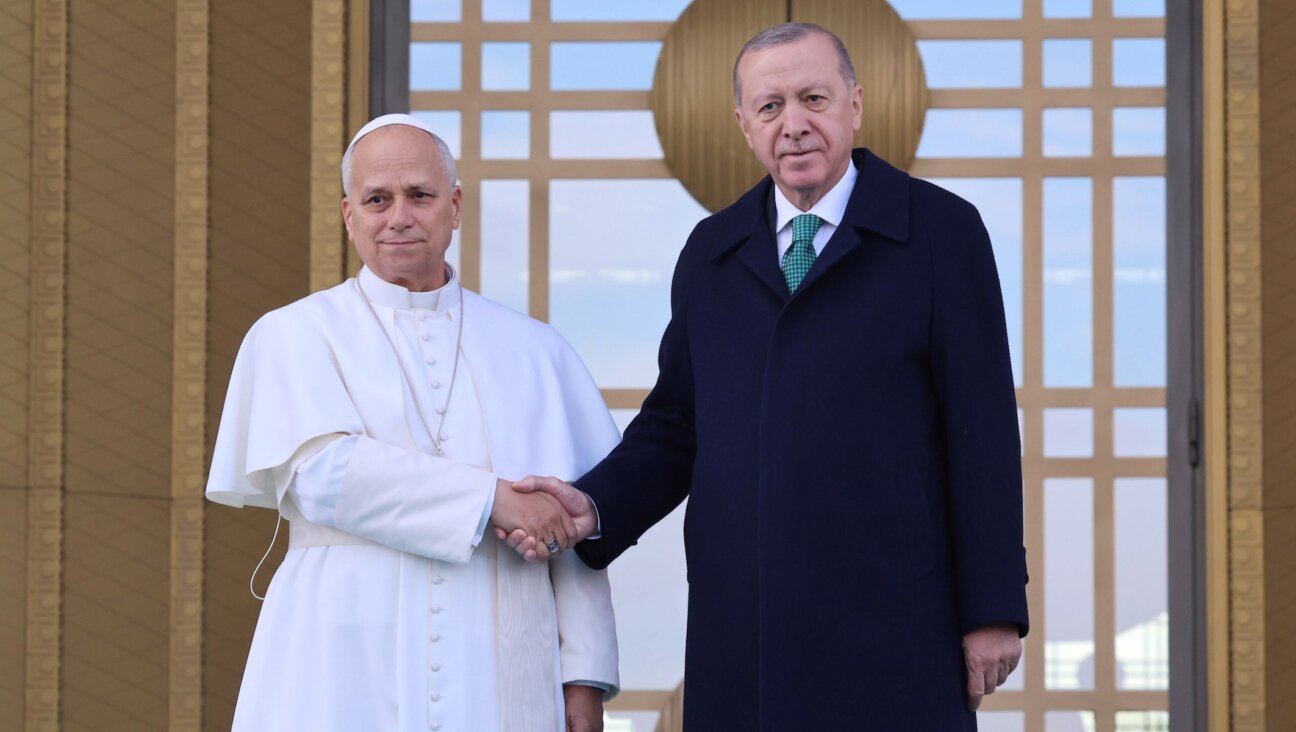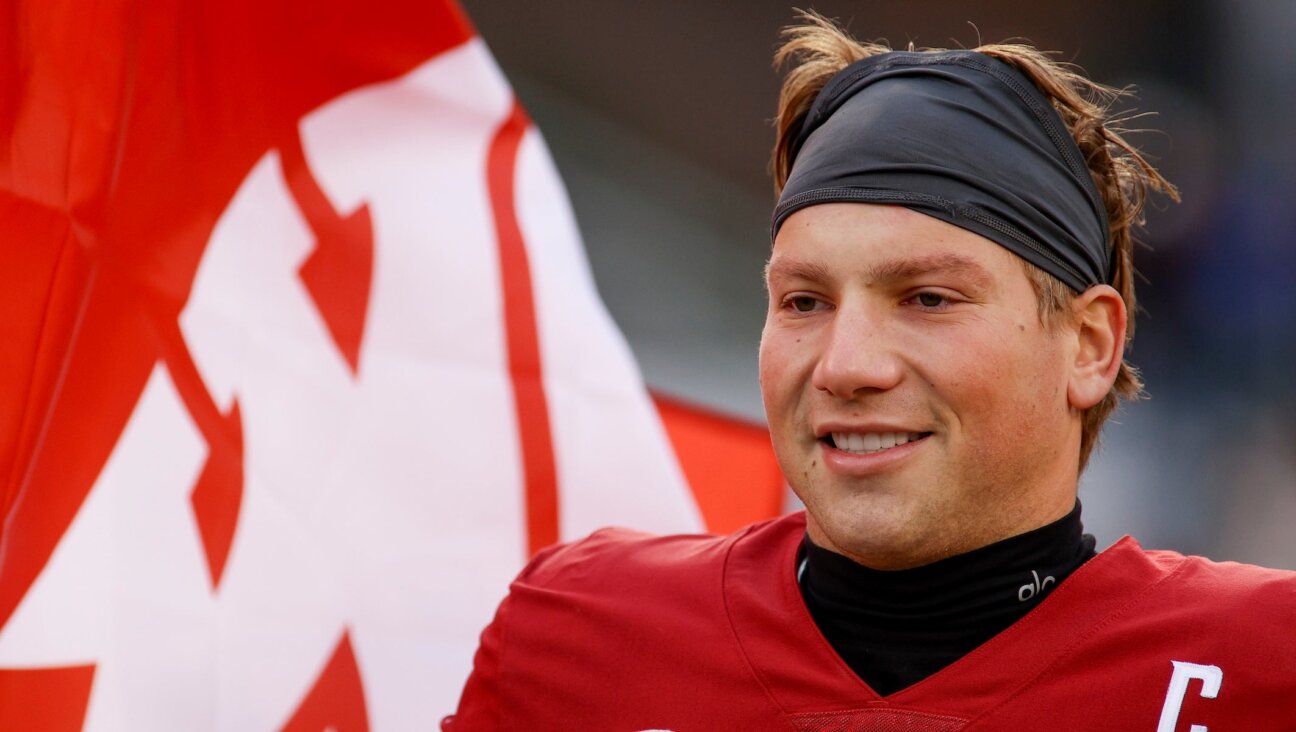Racial justice and religious liberty go hand in hand. De Blasio pitted them against each other – and got sued.

New York Mayor Bill de Blasio speaks to an estimated 10,000 people as they gather in Brooklyn’s Cadman Plaza Park for a memorial service for George Floyd, the man killed by a Minneapolis police officer on June 04, 2020 in New York City. Floyd’s brother, Terrence, local politicians and civic and religious leaders also attended the event before marching over the Brooklyn Bridge. (Photo by Spencer Platt/Getty Images) Image by Getty Images
Last week, New York emerged as the new center of ongoing legal conflicts between faith communities and stay-at-home orders. While churches have previously filed religious liberty lawsuits around the country, a new lawsuit — filed by two Catholic Priests and three Orthodox Jews — comes on the heels of heightened tensions over who is and who is not granted exceptions to regulations intended to protect public health during this global pandemic.
The application of New York’s stay-at-home orders has become a particularly charged issue within New York’s ultra-Orthodox Jewish community, which perceives the recent protests combating pervasive racial injustice as receiving preferred treatment over their own synagogues, religious school and even playgrounds. To their mind, the fact that New York officials welded a playground shut this week in Williamsburg weeks after encouraging public participation in the protests, speaks to discriminatory treatment that the law ought not to allow.
Notwithstanding these charges, there likely exist legitimate legal reasons to allow public protests against racial injustice while still imposing limits on religious gatherings. The problem isn’t the policy, but the fact that Mayor de Blasio, in articulating the city’s response, has failed to provide such reasons. Instead, by using logic and language that pits racial justice and religious liberty against each other, he has both undermined the constitutionality of the current stay-at-home regime and also missed an opportunity to enlist religious commitment in support of long-overdue racial justice.
This most recent federal lawsuit is far from the first to challenge the application of stay-at-home orders to houses of worship, although it certainly gets high scores for aggressive rhetoric and political bluster. In between paragraphs describing New York’s rules as both “pseudo-scientific” and an “experiment in absolute monarchy,” the complaint ultimately alleges that prevailing capacity restrictions — currently up to ten persons in New York City and up to 25% of indoor capacity elsewhere in New York State — and social distancing protocols prevent both synagogues and churches from conducting religious worship in a manner that meets the needs of their respective congregations.
In turn, much of the complaint focuses on how numerous other businesses and institutions aren’t subjected to these sorts of limitations. And by refusing to extend these leniencies to houses of worship, the plaintiffs claim New York has violated their religious liberty rights.
That we are still talking about these sorts of religious liberty challenges to stay-at-home orders — complaints focused on businesses being open, but churches closed — is, in and of itself, somewhat surprising. Already two weeks ago, the Supreme Court put this issue to bed by narrowly rejecting a religious-liberty challenge to California’s stay-at-home order, which had limited attendance at houses of worship to 25% of capacity. The plaintiff, South Bay United Pentecostal Church, argued that this limitation constituted prohibited religious discrimination because California had imposed less severe restrictions on a variety of businesses — such as supermarkets and retail stores.
The church’s argument linked up with Supreme Court’s current understanding of the First Amendment’s prohibition against religious discrimination. One way, the Court has explained, to identify religious discrimination is when government provides legal exceptions for nonreligious reasons, but not “analogous” religious reasons. Such legal asymmetry “devalues religious reasons … by judging them to be of lesser import than nonreligious reasons” and thereby “single[s] out” religious practice “for discriminatory treatment.”
But this principle, while easy to state, is typically far harder to apply. Treating religious and nonreligious claims differently only constitutes discrimination when both sets of claims are analogous. If they aren’t analogous, then it isn’t discrimination.
And it was here that the Supreme Court justices disagreed. Chief Justice Roberts, siding with the Court’s more liberal justices to form a majority, argued that houses of worship were being treated just like other similar institutions where large groups gather closely together for an extended period of time. Thus, houses of worship were no worse off than lecture and concert halls, theaters, and sporting events. Therefore, the stay-at-home order did not discriminate against religion; houses of worship were treated just like other analogous institutions that presented the same level of public health risk.
The dissenting justices, however, saw things quite differently. In their view, houses of worship were being treated far worse than what they viewed as “comparable businesses,” such as “factories, offices, supermarkets, restaurants, retail stores, pharmacies, shopping malls, pet grooming shops, bookstores, florists, hair salons, and cannabis dispensaries.” As a result, the regulations were discriminatory because they treated houses of worship worse than their nonreligious counterparts.
And, as is predictable these days, commentators on both sides of the political spectrum leveled criticism. Some on the right chastised the majority for having the audacity to compare religious worship to sporting events; some on the left chastised the dissenting justices for comparing religious worship to cannabis dispensaries.
In reality, figuring out the legal question was hard because houses of worship are unique, sharing a range of characteristics with a range of institutions. So figuring out whether California was treating nonreligious institutions better than religious institutions — and thereby engaging in constitutionally prohibited religious discrimination — really depended on which institutions most closely resembled houses of worship.
It is also worth noting what the Supreme Court did not do. In identifying the most analogous institutions, the Court did not argue that supermarkets and retail stores, which received more regulatory leeway, were more important than houses of worship — and with good reason. To do so would have been to engage in precisely the kind of analysis that the First Amendment prohibits.
Describing houses of worship as less important than other comparable institutions — instead of simply comparing the relative health risks associated with opening houses of worship — would be a paradigm case of devaluing religious reasons as compared to nonreligious reasons. And that sort of logic would be prime evidence of constitutionally prohibited religious discrimination.
Enter the nationwide racial justice protests, triggered by the horrifying murder of George Floyd at the hands of a police officer in broad daylight. Around the United States, legions of Americans flooded the streets, demanding that government finally take seriously the need to address the plague of racism that has permeated our country’s institutions for more than 400 years. In New York, thousands marched in protests, demanding justice and change; Mayor de Blasio himself addressed one of those protests, standing in solidarity with those assembled to challenge America’s pervasive discrimination.
But these righteous and necessary protests did not appear to abide by New York’s stay-at-home order — the very restrictions still imposed on houses of worship. Protesters stood side by side, without social distancing, and exceeded all relevant restrictions on mass gatherings.
The fact that government officials condoned — and even participated in — these protests opened another flank in the religious liberty attack on stay-at-home orders — a flank that the current plaintiffs seize upon repeatedly in their federal complaint. After all, argue the plaintiffs, how could government officials relax stay-at-home orders for the protests, but not do the same for houses of worship? Indeed, the argument goes, isn’t this precisely the sort of devaluing of religious exceptions — the judging of them to be of lesser importance than nonreligious exceptions — that the Supreme Court prohibited as religious discrimination?
Not surprisingly, in the days after the protests, government officials were asked to respond to these precise questions. In explaining the disparate treatment of houses of worship and the racial justice protests, they could have taken a page out of Chief Justice Roberts’ playbook. The protests, while presenting clear public health risks given their size and lack of social distancing protocols, took place over a matter of days. Such a mass gathering certainly risked spreading COVID-19; but government officials might have reasonably explained that the limited duration of the events meant that they did not pose the same risks as reopening all houses of worship without restriction going forward indefinitely.
Indeed, it is precisely when government officials engage in this sort of “dynamic and fact-intensive” risk-assessment that Justice Roberts explained they should be given constitutional leeway. Thus, from the vantage point of risk, government could reasonably look at protests and worship services as insufficiently comparable such that authorizing the former, but prohibiting the latter, ought not to constitute impermissible religious discrimination.
New York officials, unfortunately, gave a very different kind of answer. Maybe the most notable was Mayor de Blasio, who argued that the protests were more important than religious services. In his words, “When you see a nation, an entire nation, simultaneously grappling with an extraordinary crisis seeded in 400 years of American racism, I’m sorry, that is not the same question as the … devout religious person who wants to go back to services.”
By focusing on the relative importance — and not the relative risks — of the racial-justice protests and the religious prayer services, de Blasio put the decision to continue applying the stay-at-home order to houses of worship squarely in the First Amendment’s crosshairs. It would be hard to imagine a more explicit devaluing of religious reasons as compared to non-religious reasons and — from a legal perspective — that remains true regardless of whether one agrees with de Blasio’s statement on the merits.
The Court has emphasized that such devaluing — arguing that religious reasons aren’t as important as nonreligious reasons — stands at the center of what the First Amendment prohibits. As a result, de Blasio’s proclamation now threatens to undermine the ability of New York State to impose orderly restrictions on houses of worship in the face of an ongoing global pandemic.
But these legal challenges are just the beginning of the damage. By comparing the relative importance of racial justice and religious worship, de Blasio has cast these two noble aspirations in some sort of public policy death match. And doing so encourages the public to think of these two constitutional values as in a zero-sum competition where progress for one comes at the expense of the other.
Nothing could be more destructive in the current moment. Faith communities, with their longstanding theologies of human dignity, stand as natural allies in our present fight to excise the scourge of racial injustice from our society. But responding to disparate treatment in the face of global pandemic by prioritizing racial injustice over religious observance transforms a potential tailwind into an unnecessary headwind.
Politicians should use their voices to bring the various threads of our constitutional imagination and thereby galvanize even broader support behind our society’s most urgent needs. In the end, statements to the contrary not only make it more likely that the plaintiffs will win these cases, but they also ensure that we, as a society, all lose.
Michael A. Helfand is an associate dean and professor of law at Pepperdine Caruso School of Law, visiting professor at Yale Law School, and fellow at the Shalom Hartman Institute.















